Now that the dust has settled on another jam-packed Milan Design Week, we take a minute to look back at some of our favourite experiences at Euroluce 2017.

Lasvit stand, designed by Marek Deyl from Deyl-Sestak Architects
April 19th, 2017
Light. It offers designers plenty of latitude for atmospheric play in spaces. But designing a trade-fair environment in which to present lighting objects is no mean feat. Should you focus on the form of the products, the light and shadow they create, or the space in which they cast their lumens?
There’s the potential for all three approaches to grab the eyeballs and attention of weary fair goers. We were delighted to encounter some standout booths at Euroluce during the Salone del Mobile 2017 in Milan. Here are some of them:
FLOS
Simply getting a foot into the FLOS stand was an achievement in itself, given the number of people trying to see it for themselves! Milan-based design and architecture studio Calvi Brambilla designed the enormous 1,000sqm stand as “a place made up of minimalist but dynamic spaces” (in their words) – sets where the new collections play the leading role. Walls seemed to be brought to life by movement, as though they had been pulled aside like curtains. The stand created a sense of journey from space to space where drool-worthy pieces from Michael Anastassiades, Ronan & Erwan Bouroullec, Konstantin Grcic, Piero Lissoni, Barber & Osgerby, Philippe Starck, Vincent Van Duysen, Formafantasma and Nendo were on display.
LOUIS POULSEN
Danish duo GamFratesi not only designed a new lamp dubbed Yuh for Louis Poulsen; they also designed the brand’s impressive paper-like stand. The structure, a composition of lofty walls cut like paper into stepping fragments, was inspired by Japanese paper art. The idea was to get visitors thinking about how cuts, lines and shapes can affect light and create ambience. The stepping forms were replicated on the exterior of the booth where visitors could slip inside through cuts in the side walls as well as through the main entrance. Total success.
FOSCARINI
Foscarini’s 880sqm stand was designed by Italian architect Ferruccio Laviani, who created a dual presence in line with the brand’s two ‘sides’. He explained, “On the one hand, the more creative side, that takes its inspiration from culture, art, the many stimuli emerging in the contemporary world… [O]n the other, I wanted to communicate the reality of a company made of technological research, innovation, communication, commitment… One side is softer, so to speak, while the other is more ‘solid’.” A rigorous, even somewhat severe exterior gave way to a more intimate and playful interior containing large glass display cases.
LASVIT
‘Laterna Magica’ was the concept for Lasvit’s stand, which showcased new products from Kengo Kuma, Zaha Hadid Design, Yabu Pushelberg, and Ed Ng and Terence Ngan in its central cavern. The textile stand architecture (designed by Marek Deyl from Deyl-Sestak Architects) swooped and curved in a sequence of spaces. The name ‘Laterna Magica’ was derived from an early type of image projector form the seventeenth century, which used hand-painted sheets of glass, a lens and a light source to project images in space. Lasvit simulated this using video mapping on the textile surface.
BAROVIER&TOSO
Calvi Brambilla was also behind the fiery Barovier&Toso stand, which used multimedia to define a powerful presence. Seven giant round niches presented their backs to the corridor, accommodating moving images of dancing flames in reference to the genesis of glass. Each niche contained a new collection against white drapes. True to the intent, it stopped people in their tracks, us included.
INDESIGN is on instagram
Follow @indesignlive
A searchable and comprehensive guide for specifying leading products and their suppliers
Keep up to date with the latest and greatest from our industry BFF's!

For Aidan Mawhinney, the secret ingredient to Living Edge’s success “comes down to people, product and place.” As the brand celebrates a significant 25-year milestone, it’s that commitment to authentic, sustainable design – and the people behind it all – that continues to anchor its legacy.
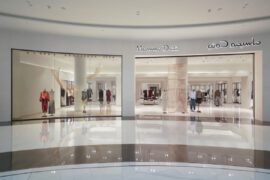
Crafting form and creating function with rattan, Patrick Keane and Enter Projects Asia’s latest project is proving to be a draw card for shoppers at the dynamic fashion house Massimo Dutti.
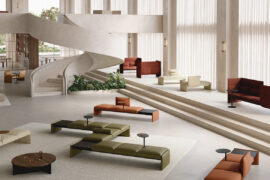
Where style and substance truly dwell, Gardam’s latest modular collection – available through Stylecraft – balances elegance and versatility.
The internet never sleeps! Here's the stuff you might have missed
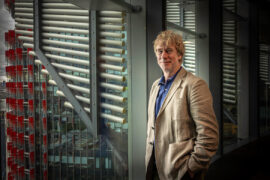
The Senior Design Director at RSHP reflects on Barangaroo South Masterplan during a visit to Sydney marking ten years since the completion of the first phase.
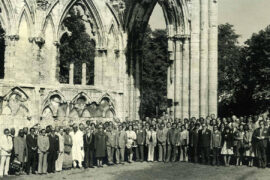
Celebrating six decades of architectural excellence, the Commonwealth Association of Architects launches a year-long campaign.
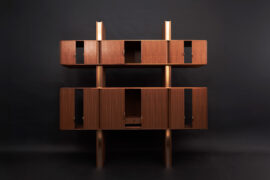
Adam Markowitz Design, in collaboration with Simeon Dux, has been awarded The Object at the INDE.Awards 2025. Their winning project, A Cabinet of Curiosities, is a masterwork of craftsmanship and adaptability; a poetic response to shifting domestic and professional life in the post-COVID era.